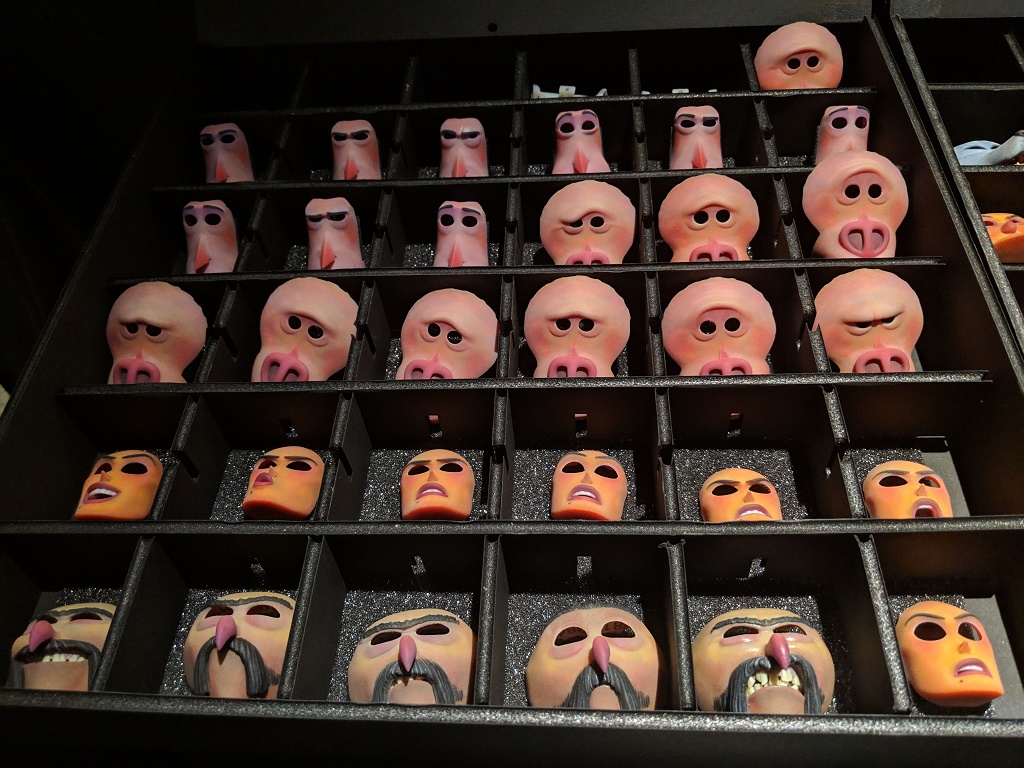![Character faces from ‘Missing Link’ [Image: Sarah Goehrke]](https://fabbaloo.com/wp-content/uploads/2020/05/LAIKAsetvisitSGoehrke283329_img_5eb09adc63f75.jpg)
LAIKA 3D printed 106,000 faces for Missing Link.
The latest stop-motion release brought 3D printing together with handcrafting, CGI, and other animation arts to tell the story of, well, the missing link. His name is Susan, and he seems like a pretty jovial guy. Susan, or Mr. Link, just wants to find his family; he’s alone in the Pacific Northwest when adventurer Sir Lionel Frost meets him. Along with Frost’s former flame Adelina Fortnight, an adventure begins to reunite Mr. Link with perhaps his long-lost (and far-off) relatives: the Yetis.
The about hour-and-a-half-long movie follows their adventures and misadventures around the world, with plenty of action and intrigue along the way.
But would we really care about these characters if we couldn’t empathize with them? How exactly do you empathize with a foot-tall puppet made of silicone when even one of its creators calls it “an avocado with a face”?
So LAIKA put its many creative minds together to make its most nuanced character work yet.
Last week I went on-set at LAIKA to look behind the scenes at the making of Missing Link and hear directly from the team about the many aspects of its creation. In part one, we looked at the broad scope of production, with the writer/director, producer, costume designer, creative lead, director of rapid prototyping, head of rigging, production designer, and VFX supervisor.
“This movie is the first time our facial animation was bespoke,” said writer/director Chris Butler. “It’s another level of acting, really, of nuance.”
Producer Arianne Sutner added that while the studio’s last movie, Kubo and the Two Strings, had an impressive 64,000 faces 3D printed, more than 106,000 were made for Missing Link.
“We’re not proud because we made so many faces, but because we were able to put so many beautiful, superb, subtle details in them that brought these performances up a notch,” Sutner said.
Now, a closer look at Director of Rapid Prototyping Brian McLean’s exploration of the 3D printing behind Missing Link.
![Brian McLean with Mr. Link [Image: Sarah Goehrke]](https://fabbaloo.com/wp-content/uploads/2020/05/LAIKAsetvisitSGoehrke286129_img_5eb09adcdafd6.jpg)
Each character takes about six months to a year of design work, especially the principals with a great deal of screen time and so a broad range of expressions throughout the story. These are designed in Maya, as the faces pop on and off with magnets. A code system keeps each face straight so the animation teams always know which face goes on in which order.
After offering a quick preparatory word for the “nightmare fuel,” McLean popped off Sir Lionel’s face, exposing the complex workings underneath. The eyes and eyelids stay on the main figure — the 3D printed faces are effectively masks with eye holes — and these are adjusted with an X-acto knife to complete the full expression.
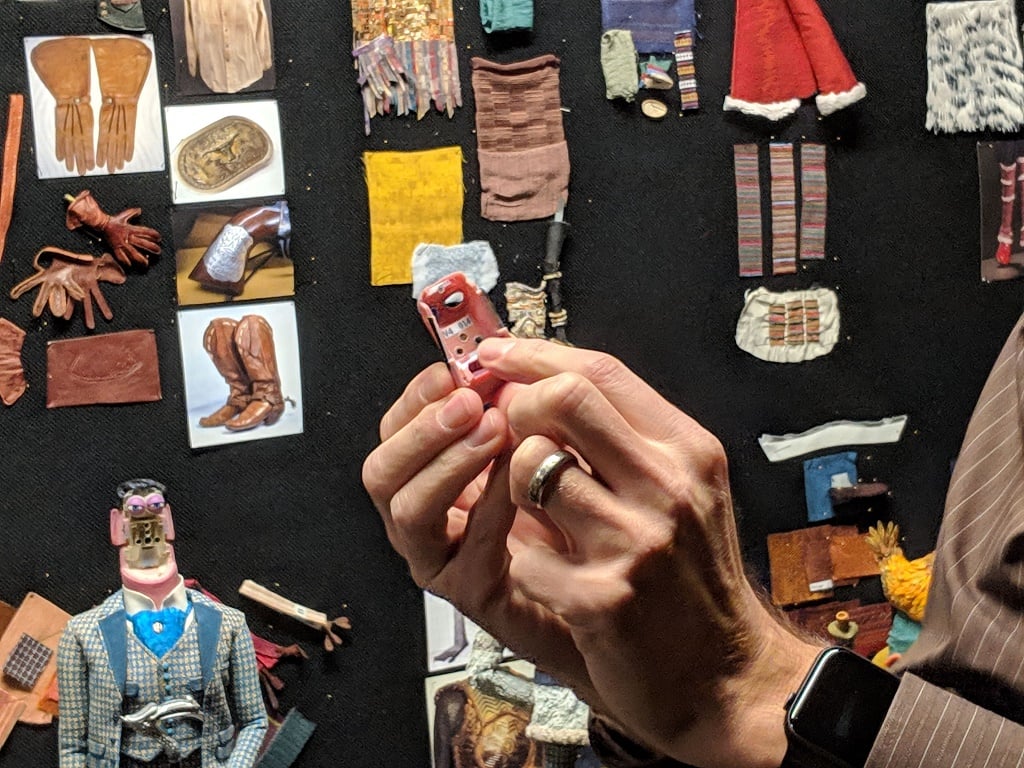
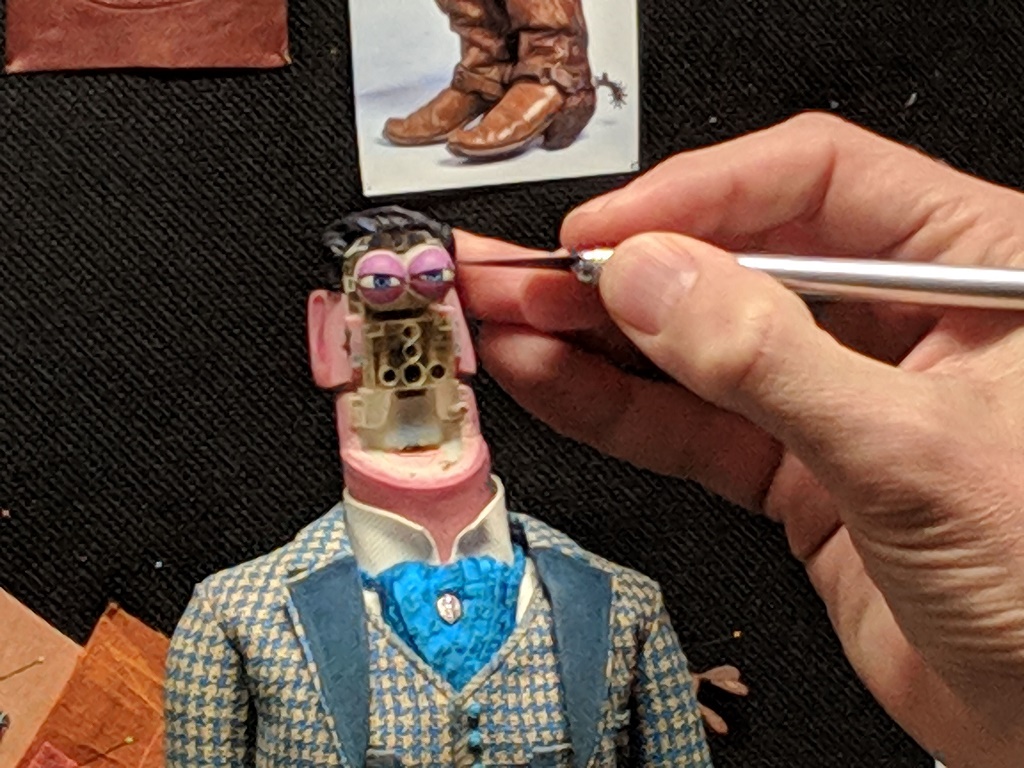
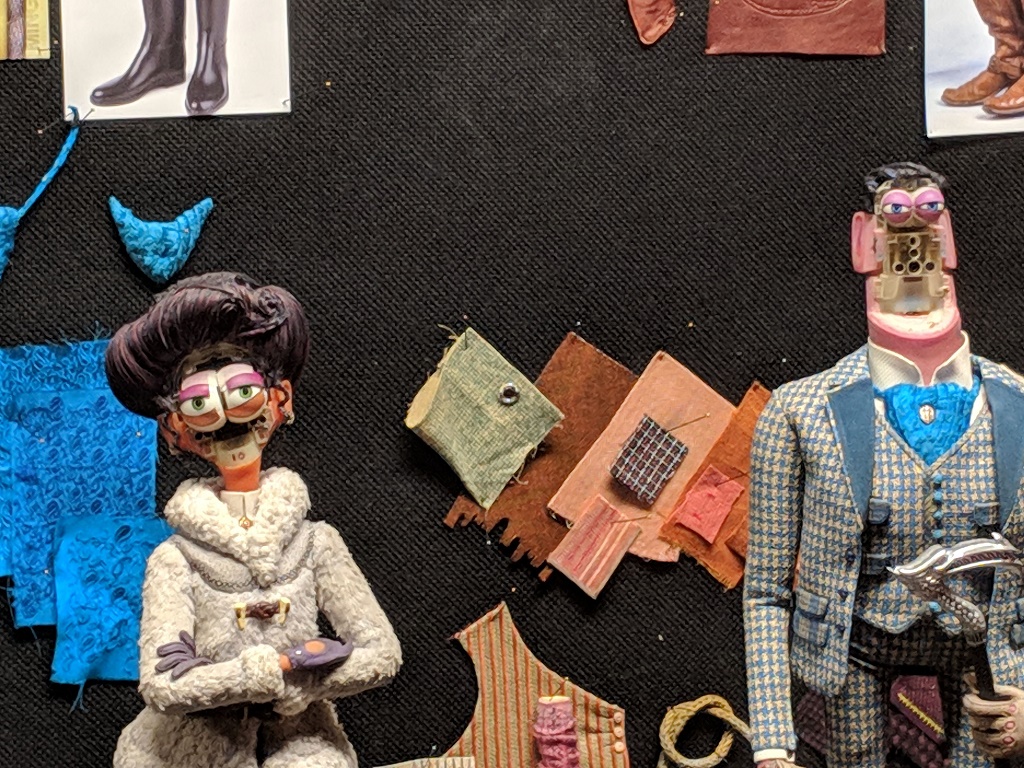
[A look inside the faces / Images: Sarah Goehrke]
“It’s kind of like a really fancy Mr. Potato Head,” McLean said.
Stepping back, McLean walked through the studio’s progression with 3D printing. A decade into use of the technology, LAIKA has gained more comfort with different techniques. The best fit they’ve found so far is the Stratasys J750, using Fraunhofer’s precise Cuttlefish software that expanded GrabCAD Print’s capabilities a bit after the release of the J750 itself, for voxel-level color control.
From its start with Coraline and 20,000 faces 3D printed on the white-material-only Objet Eden260, LAIKA was eager to progress to full-color 3D printing. Hand-painting, while ensuring a beautiful finish, does not always ensure frame-by-frame consistency.
![McLean with a white face from ‘Coraline’ [Image: Sarah Goehrke]](https://fabbaloo.com/wp-content/uploads/2020/05/LAIKAsetvisitSGoehrke285029_img_5eb09adeb7723.jpg)
“Coraline had five freckles on the right cheek, five freckles on the left cheek,” McLean explained of the precision the hand-painting required. “We had an Excel spreadsheet tracking expenses for freckles.”
Moving into color capabilities, LAIKA was eager for the J750 release in 2016. The Connex3 had been LAIKA’s introduction to resin color printing, which McLean noted was ‘always’ the goal for his team.
“We saw this technology and thought it was where the industry was going. We used it for three Kubo characters. The hardware was really cool, but the software was still very limiting. We wanted to get in early, though; this was around 2013-2014,” he explained. “Our hunch was right.”
LAIKA became a beta user of the J750 and when in 2016 the system was released, “we got the first five off the assembly line.”
![A face fresh off the J750 with support material still attached [Image: Sarah Goehrke]](https://fabbaloo.com/wp-content/uploads/2020/05/LAIKAsetvisitSGoehrke285729_img_5eb09adf25428.jpg)
The studio now has six J750 systems and two Connex3 machines installed. They’ve looked into similar technologies (the newer, smaller J735 wasn’t a fit due to its smaller bed size) as well as other color options (including Mimaki’s), as they remain dedicated to keeping on top of the solutions that can meet their specific — and very exacting — needs.
106,000 may sound like quite a lot of faces, and it is. This movie features our three protagonists as well as at least one villainous type, a slew of unknown quantities (in the Yetis), and any number of secondary and background characters. Well, not any number; in all, 107 characters had puppets made. The main characters of course had multiple puppets made, suited for different shooting situations and settings, as well as scale close-ups (see part one for a 300% scale Mr. Link bum and 600% scale mouth).
Stop-motion animation requires animators to get everything precisely set up, take a shot, tweak the setup, take another shot, and so on. The minute changes to expressions, movements, the way garments lie, all add up to the gestures and actions that come alive when the 24-frames-per-second come together.
LAIKA is bringing 3D printing more into its operations, though even there adoption remains relatively low. While 106,000 faces may not sound like low adoption, consider that only about 5% of other set pieces, props, etc. were 3D printed; most are still made by hand.
Stop-motion is a particularly physical style of animation. All of animation used to be done by hand, whether stop-motion or drawn, but an increasingly digital world is leading to increasingly digital animation. There remains a beautiful handcrafted quality to even the advanced stop-motion techniques that LAIKA employs, and it would be not only a shame to lose some of that, but there still isn’t that much tangible benefit.
By the time a computer rendering is made and the design is sent to the printer, an experienced artist could already have sketched out and created with traditional materials the prop they had in mind. But when it comes to mass customization, the same thing made over and over again with reliable quality — that’s where 3D printing shines.
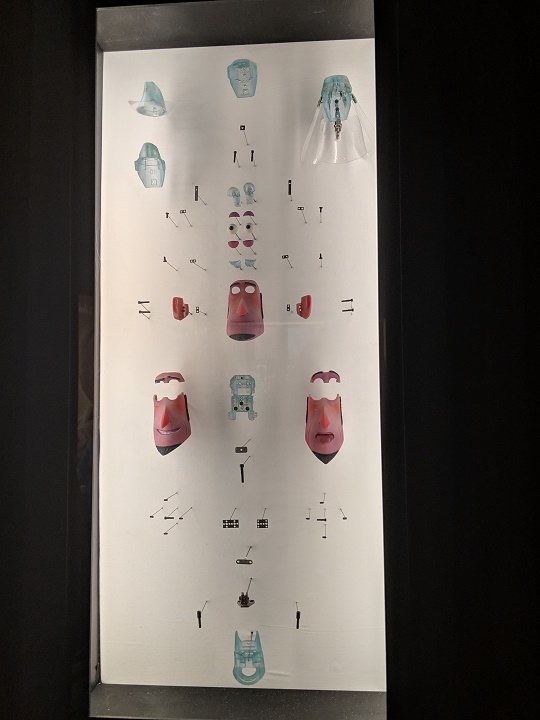
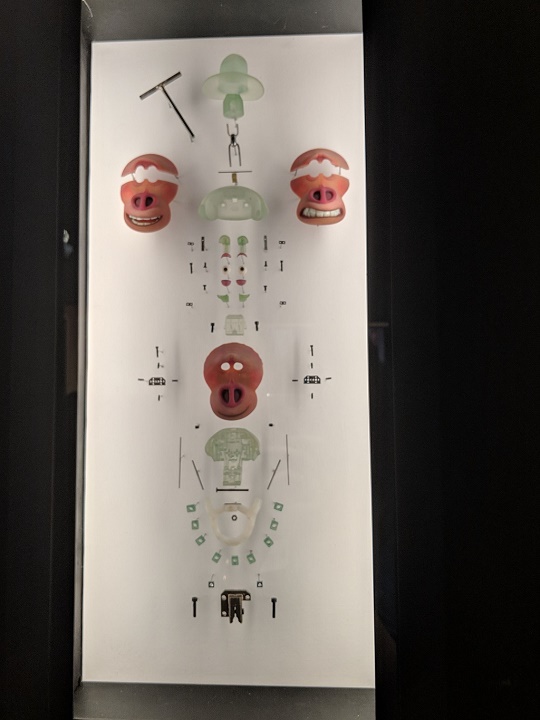
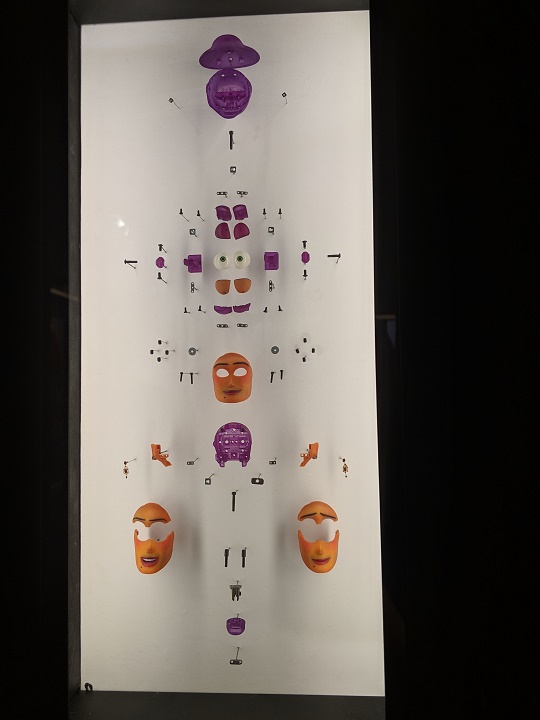
[Face structures for Lionel, Susan, and Adelina / Images: Sarah Goehrke]
3D printing is sure to continue to come into play throughout LAIKA, with more applications popping up as the team gains more experience and confidence with the technology and its design needs. Still, it’s a beautiful thing to see the hybrid approach of traditional and advanced technologies, and to see 3D printing put to use where it sees its best fit, and not used more ‘just because we can.’
Mr. Link may be “an avocado with a face” — but that face is certainly expressive enough to drive a plot and draw in audiences. Missing Link opens April 12.
Read part one here.
Via LAIKA

